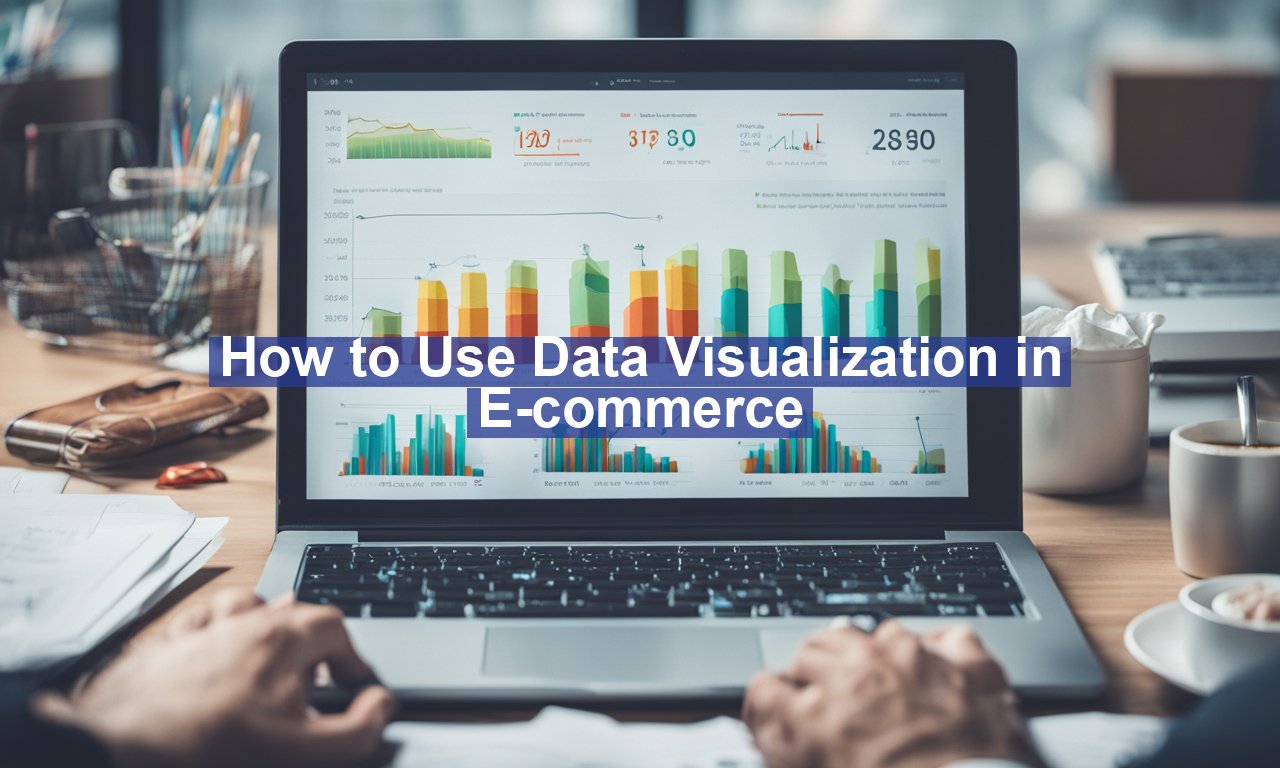How to use data visualization in E-commerce imagine a world where every decision you make in your e-commerce business is backed by insightful data that not only helps you understand your customers better but also boosts your sales. Sounds like a dream, right? Well, with the powerful tool of data visualization, this dream is well within reach. In today’s competitive online marketplace, leveraging data visualization can be your secret weapon to gain an edge over your competitors. This article delves into the practical how to use data visualization in E-commerce, highlights its significance, and offers actionable strategies to implement it effectively.
What is Data Visualization and Why is it Important for E-commerce?
Data visualization is the graphical representation of information and data using visual elements like charts, graphs, and maps. By transforming complex datasets into easy-to-understand visuals, businesses can uncover patterns, trends, and insights at a glance.
In the e-commerce industry, where data is constantly being generated—from customer interactions to website traffic and sales metrics—being able to quickly interpret this data can lead to more informed decision-making. According to an article by Forbes, effectively using data visualization helps e-commerce businesses optimize marketing strategies, tailor customer experiences, and ultimately increase revenue.
How Can Data Visualization Enhance Customer Experience?
Understanding customer behavior is paramount in creating personalized shopping experiences. Data visualization tools enable you to:
- Analyze Customer Behavior: Visual tools help break down customer data such as demographic information, purchasing habits, and website navigation paths. This allows you to tailor your product offerings and marketing strategies accordingly.
- Enhance User Interface: By using visual data to understand user interactions, you can refine your website’s design and functionality to offer a seamless shopping experience.
- Personalize Recommendations: With visual insights, you can identify cross-selling and up-selling opportunities by recommending products that align with your customer’s preferences and purchase history.
By focusing on these areas, you’re not just enhancing your customer’s journey but also increasing your chances of boosting conversion rates.
Boosting Marketing Strategies with Data Visualization
Marketing in e-commerce is more intricate than in traditional retail environments. With a plethora of options to track, data visualization helps marketers:
- Identify Trends and Patterns: Spot emerging trends before they become mainstream, allowing you to adjust marketing strategies ahead of competitors.
- Optimize Ad Spend: Visualizing performance data from different marketing channels helps you allocate your budget more effectively and maximize ROI.
- Segment Audiences: By visualizing customer data, you can create precise audience segments for targeted marketing rather than a one-size-fits-all approach.
Through data visualization, you’re empowered to develop marketing campaigns that resonate more deeply with your target audience and drive better results.
Improving Inventory Management
Effective inventory management is a critical component of a successful e-commerce business. Here’s how data visualization can help:
- Track Stock Levels: Interactive dashboards offer at-a-glance insights into product availability, helping you manage stock efficiently and prevent overstocking or stockouts.
- Analyze Product Performance: Data visualizations reveal which products are high performers and which ones may need extra promotional efforts, allowing you to make informed reordering decisions.
- Predict Demand: Visualizing historical sales data alongside seasonality trends helps you forecast upcoming demand more accurately and plan inventory accordingly.
By leveraging these visual insights, you can streamline your operations and make more profitable inventory decisions.
Visualizing Sales Data for Better Insights
Sales data is a treasure trove of insights, but it can be unwieldy. With data visualization, you can:
- Measure KPI Performance: Automatically generated reports and dashboards provide real-time updates on your sales-related KPIs, such as conversion rates, average order value, and customer acquisition cost.
- Identify Sales Funnels: Visual tools help you understand your sales funnel, identifying where potential customers drop off so you can refine your sales process to capture those lost opportunities.
- Uncover Regional Trends: Mapping sales data geographically highlights regions where you’re doing well and areas that need more focus.
To dig deeper into how effective use of sales data can be transformative for your e-commerce strategy, check out the guidelines by Shopify.
Choosing the Right Data Visualization Tools
The market is flooded with data visualization tools, each boasting unique features suited to different business needs. When selecting a tool, consider the following:
- User-Friendly Interface: Choose tools that are easy to navigate, even for those without technical expertise.
- Integration Capability: Ensure that the tool can easily integrate with your existing systems, like your e-commerce platform and CRM software.
- Scalability: Select a tool that can grow with your business and handle increasing data volumes as your operations expand.
Some popular data visualization tools include Tableau, Google Data Studio, and Microsoft Power BI.
Conclusion
In essence, How to use data visualization in E-commerce arsenal. By transforming raw data into actionable insights, you can enhance customer experiences, refine marketing strategies, streamline inventory management, and ultimately boost your sales performance. With the right approach and tools, your e-commerce business can truly thrive in today’s data-driven world. For further reading on this topic, this insightful article from Datapine provides additional strategies and techniques.
So, are you ready to harness the power of data visualization and take your e-commerce business to the next level? Dive in and start transforming your data into your most valuable asset.


